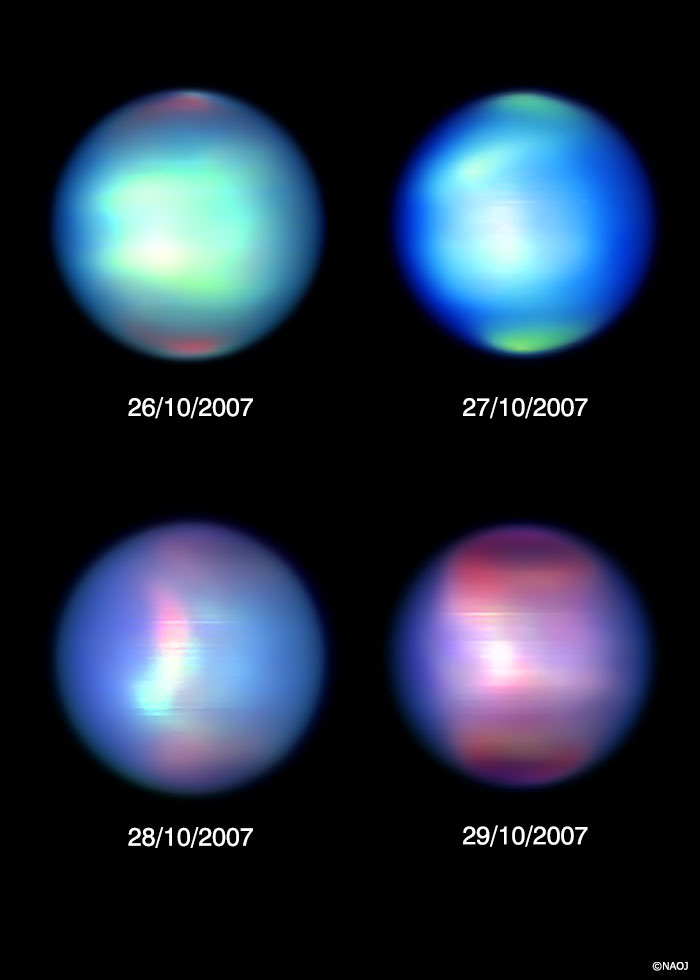Changes in the Venusian Clouds
Astrophotography・

| Object Name | Venus |
|---|---|
| Telescope | The Subaru Telescope |
| Instrument | COMICS (Cooled Mid-Infrared Camera and Spectrograph) |
| Wavelengths (Filters) | 8.59 μm (UIR8.6), 11.24 μm (UIR11.2), 12.81 μm (NeII) |
| Color Code | Red (UIR8.6), Green (UIR11.2), Blue (NeII) |
| Exposure Time | Oct. 26: 8 s (UIR8.6), 2 s (UIR11.2), 4 s (NeII), Oct. 27: 4 s (UIR8.6), 2 s (UIR11.2), 4 s (NeII), Oct. 28: 4 s (UIR8.6), 1.5 s (UIR11.2), 4 s (NeII), Oct. 29: 6 s (UIR8.6), 1.5 s (UIR11.2), 3 s (NeII) |
| Date | October 26-29, 2007 |
| Location | Mauna Kea, Island of Hawai`i |
| Observer | Kazuaki Mitsuyama (ISAS, JAXA) |
| Image Processing | Ramsey Lundock (NAOJ) |
| Copyright | National Astronomical Observatory of Japan |
Earth is not the only planet with clouds. Earth’s clouds can be an obstacle for astronomical observations. On the other hand, clouds on other planets can be the object of astronomical observations.
Thick clouds hide the surface of Venus. These clouds aren’t water vapor like Earth’s clouds; they are composed of sulfuric acid droplets. These clouds foil attempts to observe the surface of Venus using visible and infrared light, but instead we can observe the cloud pattern itself. Venus has a very slow rotation, taking 117 Earth days to complete one Venusian day. In contrast, Venus’s atmosphere takes only 4 to 5 Earth days to spin around the planet in a phenomenon known as ‘superrotation.’ The direction of Venus’s rotation (right to left in these images) is backwards compared to the rest of the Solar System; the reason for this isn’t yet fully understood.
These false-color infrared images of Venus taken with the Subaru Telescope show changes in the cloud top temperatures over 4 days. Red indicates warmer regions and blue indicates cooler regions. These temperature changes are caused by vertical motion or turbulence in Venus’s atmosphere. The exposure times of the pictures varied from one day to the next, making quantitative comparison difficult, but it is easy to see qualitatively how the shapes of the clouds change from day to day. In particular, Venus’s poles show dramatic changes.
Text by: Ramsey Lundock (NAOJ)